 Facebook
Facebook
 X
X
 Instagram
Instagram
 TikTok
TikTok
 Youtube
Youtube
![Edwin Frazee: “We burned the house down when we was kids [in 1924]. We was left home alone to take care of ourselves.”](https://media.sandiegoreader.com/img/photos/2021/05/31/edwin-frazee_t720_t670.jpg?b3f6a5d7692ccc373d56e40cf708e3fa67d9af9d)
“It’s not for the faint-hearted. It’s pretty high-risk because they’re very, very, very, very perishable. When the flowers are bloomed, you have to pick ’em. And you have to sell ’em. Otherwise you throw them away. It’s very intense. Let’s say you’re sitting there with $15,000 or $20,000 in the field, and it rains. And you can’t pick. You throw that money away. If it’s hot, it burns ’em. If it’s cold, it freezes ’em.”
By Jeannette De Wyze, March 9, 1995 | Read full article
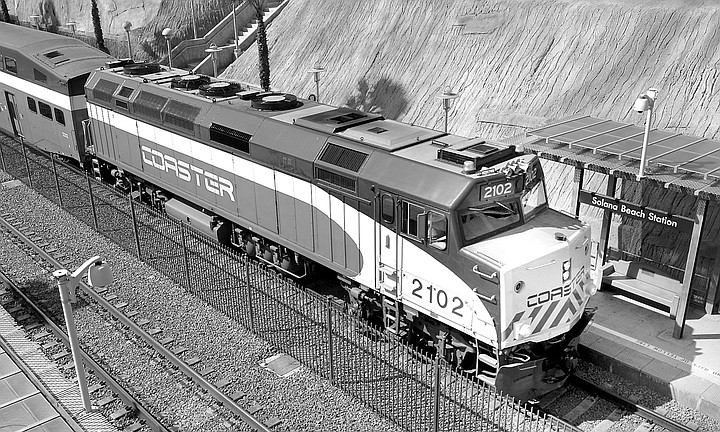
Mitchell Reiss can relate. "Freeway capacity provides 24-hour availability and true point-to-point access. Contrast that to the heavily restricted and inflexible nature of the Coaster. That, of course, is one of the main reasons no one wants to ride it. A dollar spent on a freeway buys something vastly different from a dollar spent on a train." The Union-Tribune's editorial-board members even "indicate that not every alternative to the automobile is worth pursuing, depending on the cost.”
By Joe Deegan, June 3, 2004 | Read full article
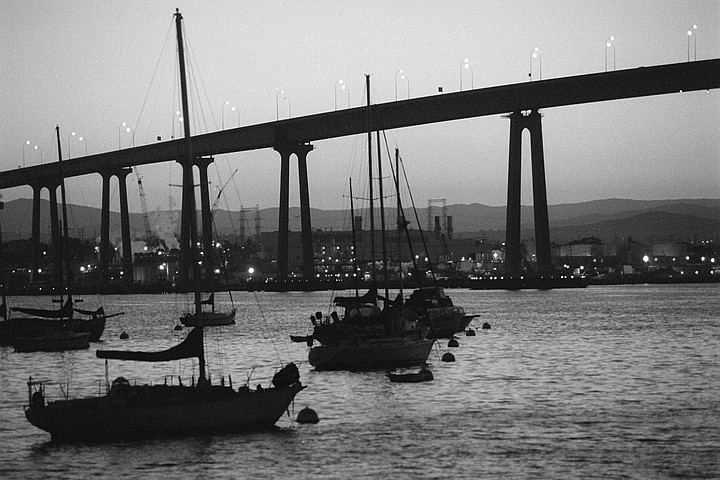
It’s a design originally used by German naval engineers building battle ships. Instead of showing off its muscles like a suspension bridge, it keeps them all hidden inside, beneath. It doesn’t have huge shoulders that brag about its strength like the Golden Gate or Brooklyn Bridge. It was originally set to be painted red like the former (red is easier and cheaper to maintain), but the planners decided on blue: it’s more harmonious with the surroundings.
By Thomas Lux, March 16, 2000 | Read full article
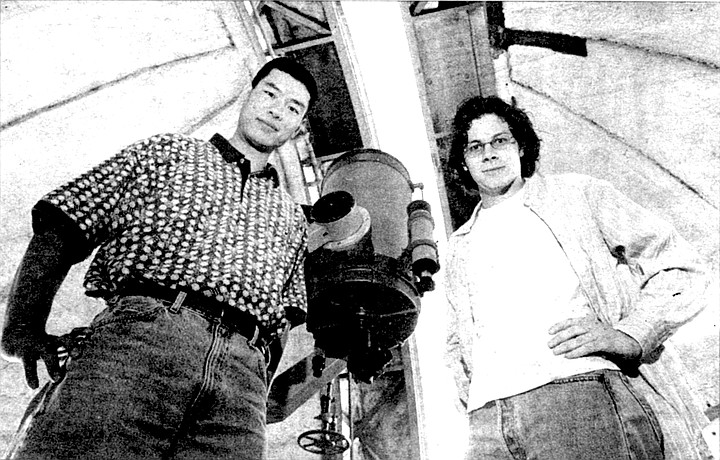
Maybe it’s premature to call someone an astronomer while they’re still in graduate school, but it would probably be okay in Ben Oppenheimer’s case because he and another graduate student had discovered the first brown dwarf. On his second night of observing at Palomar, Oppenheimer and Dave Galinowski, a grad student from Johns Hopkins, photographed Gliese 229B, a brown dwarf in companionship with the star Gliese 229A. The discovery made the front page of the New York Times.
By Douglas Whyknott, Dec. 11, 1997 | Read full article
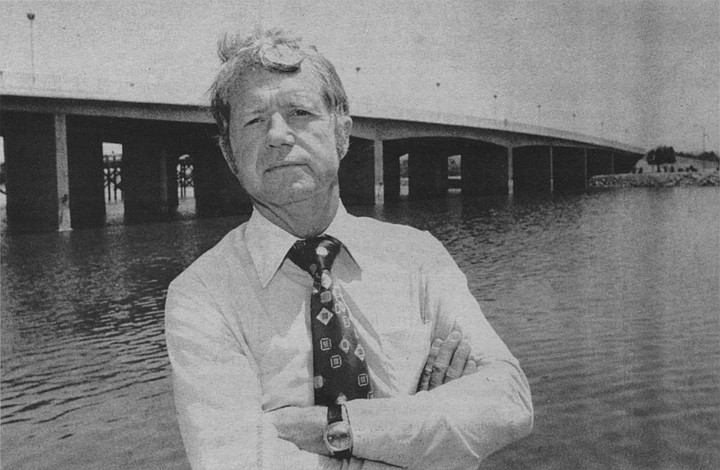
Among local bridges McDaniel favors the Cabrillo, spanning Highway 163 in Balboa Park, for its old-fashioned, nostalgic appeal. The Coronado Bridge over San Diego Bay is another project for which he has some admiration; it’s not too spectacular, but its height, geometry, and color are appealing. His unqualified praise, however, is reserved for the Lilac Road Bridge over Interstate 15 about ten miles north of Escondido, which was designed and built by CalTrans. “It’s a masterpiece.”
By John Fry, June 19, 1980 | Read full article
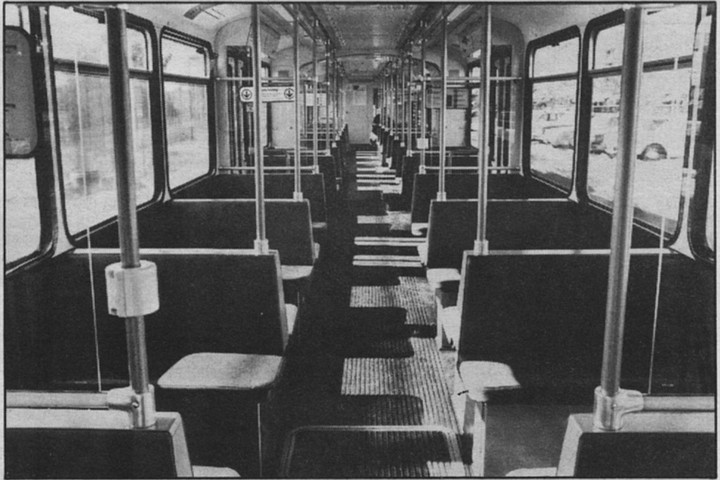
The trolley’s first leg, to San Ysidro and the border, was completed three years later for $116 million, about $30 million more than the 1978 prediction. This was true, in a technical sense; a single trolley track to the border had been completed for $86 million. But by the time construction on the first track began, MTDB had already decided it needed two tracks and additional trolley cars.
By Matt Potter, Jan. 25, 1990 | Read full article
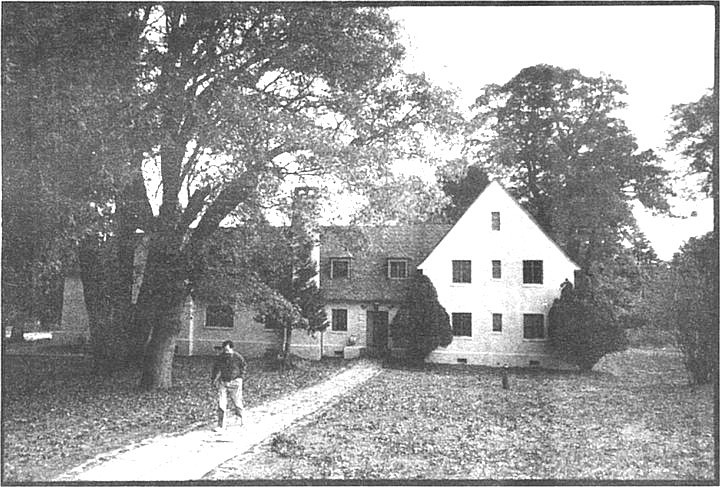
I cannot resist asking if they think life exists on other planets. “Probably millions of planets support life,” Oke declares. They find organic chemicals dispersed like confetti throughout the universe. In the farthest reaches of the void, they have detected molecules of water. Marc Postman says it’s not so much a question of whether life exists elsewhere; the question is, what’s the probability that civilizations will tend to destroy themselves once they develop technology?
By Neal Matthews, Dec. 13, 1990 | Read full article
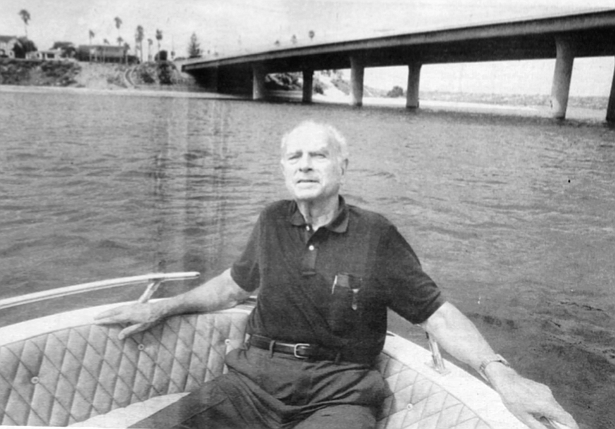
A marine aquarium had always been in the plans for Mission Bay, and it was believed that such an attraction would only need 15 acres of land. The park planners never imagined that SeaWorld would gobble up 150 acres and convert living marine animals into major revenue producers. But when proposals for the theme park were solicited, one idea had obvious possibilities: “The Sea World proposal included dolphin races with monkeys as jockeys.”
By Neal Matthews, Aug. 6, 1992 | Read full article
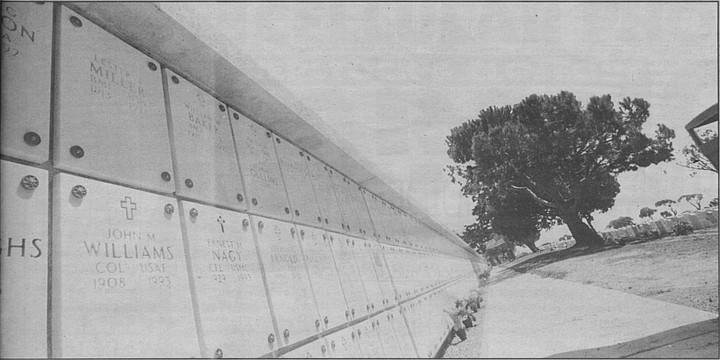
The Navy decided to build a wall around the property to hold vaults that would contain the ashes of more than 5000 veterans and their families. “In the future, it could be built to accommodate 30,000 to 40,000 more,” he says. Each cubicle measures 11- by 16-inches, and is sealed by a thick slab of white marble. The vault has the ability to hold three sets of ashes for the veteran, wife, and dependent child.
By Melinda Powelson, May 5, 1994 | Read full article

![Edwin Frazee: “We burned the house down when we was kids [in 1924]. We was left home alone to take care of ourselves.”](https://media.sandiegoreader.com/img/photos/2021/05/31/edwin-frazee_t720_t670.jpg?b3f6a5d7692ccc373d56e40cf708e3fa67d9af9d)
“It’s not for the faint-hearted. It’s pretty high-risk because they’re very, very, very, very perishable. When the flowers are bloomed, you have to pick ’em. And you have to sell ’em. Otherwise you throw them away. It’s very intense. Let’s say you’re sitting there with $15,000 or $20,000 in the field, and it rains. And you can’t pick. You throw that money away. If it’s hot, it burns ’em. If it’s cold, it freezes ’em.”
By Jeannette De Wyze, March 9, 1995 | Read full article

Mitchell Reiss can relate. "Freeway capacity provides 24-hour availability and true point-to-point access. Contrast that to the heavily restricted and inflexible nature of the Coaster. That, of course, is one of the main reasons no one wants to ride it. A dollar spent on a freeway buys something vastly different from a dollar spent on a train." The Union-Tribune's editorial-board members even "indicate that not every alternative to the automobile is worth pursuing, depending on the cost.”
By Joe Deegan, June 3, 2004 | Read full article

It’s a design originally used by German naval engineers building battle ships. Instead of showing off its muscles like a suspension bridge, it keeps them all hidden inside, beneath. It doesn’t have huge shoulders that brag about its strength like the Golden Gate or Brooklyn Bridge. It was originally set to be painted red like the former (red is easier and cheaper to maintain), but the planners decided on blue: it’s more harmonious with the surroundings.
By Thomas Lux, March 16, 2000 | Read full article

Maybe it’s premature to call someone an astronomer while they’re still in graduate school, but it would probably be okay in Ben Oppenheimer’s case because he and another graduate student had discovered the first brown dwarf. On his second night of observing at Palomar, Oppenheimer and Dave Galinowski, a grad student from Johns Hopkins, photographed Gliese 229B, a brown dwarf in companionship with the star Gliese 229A. The discovery made the front page of the New York Times.
By Douglas Whyknott, Dec. 11, 1997 | Read full article

Among local bridges McDaniel favors the Cabrillo, spanning Highway 163 in Balboa Park, for its old-fashioned, nostalgic appeal. The Coronado Bridge over San Diego Bay is another project for which he has some admiration; it’s not too spectacular, but its height, geometry, and color are appealing. His unqualified praise, however, is reserved for the Lilac Road Bridge over Interstate 15 about ten miles north of Escondido, which was designed and built by CalTrans. “It’s a masterpiece.”
By John Fry, June 19, 1980 | Read full article

The trolley’s first leg, to San Ysidro and the border, was completed three years later for $116 million, about $30 million more than the 1978 prediction. This was true, in a technical sense; a single trolley track to the border had been completed for $86 million. But by the time construction on the first track began, MTDB had already decided it needed two tracks and additional trolley cars.
By Matt Potter, Jan. 25, 1990 | Read full article

I cannot resist asking if they think life exists on other planets. “Probably millions of planets support life,” Oke declares. They find organic chemicals dispersed like confetti throughout the universe. In the farthest reaches of the void, they have detected molecules of water. Marc Postman says it’s not so much a question of whether life exists elsewhere; the question is, what’s the probability that civilizations will tend to destroy themselves once they develop technology?
By Neal Matthews, Dec. 13, 1990 | Read full article

A marine aquarium had always been in the plans for Mission Bay, and it was believed that such an attraction would only need 15 acres of land. The park planners never imagined that SeaWorld would gobble up 150 acres and convert living marine animals into major revenue producers. But when proposals for the theme park were solicited, one idea had obvious possibilities: “The Sea World proposal included dolphin races with monkeys as jockeys.”
By Neal Matthews, Aug. 6, 1992 | Read full article

The Navy decided to build a wall around the property to hold vaults that would contain the ashes of more than 5000 veterans and their families. “In the future, it could be built to accommodate 30,000 to 40,000 more,” he says. Each cubicle measures 11- by 16-inches, and is sealed by a thick slab of white marble. The vault has the ability to hold three sets of ashes for the veteran, wife, and dependent child.
By Melinda Powelson, May 5, 1994 | Read full article
Comments